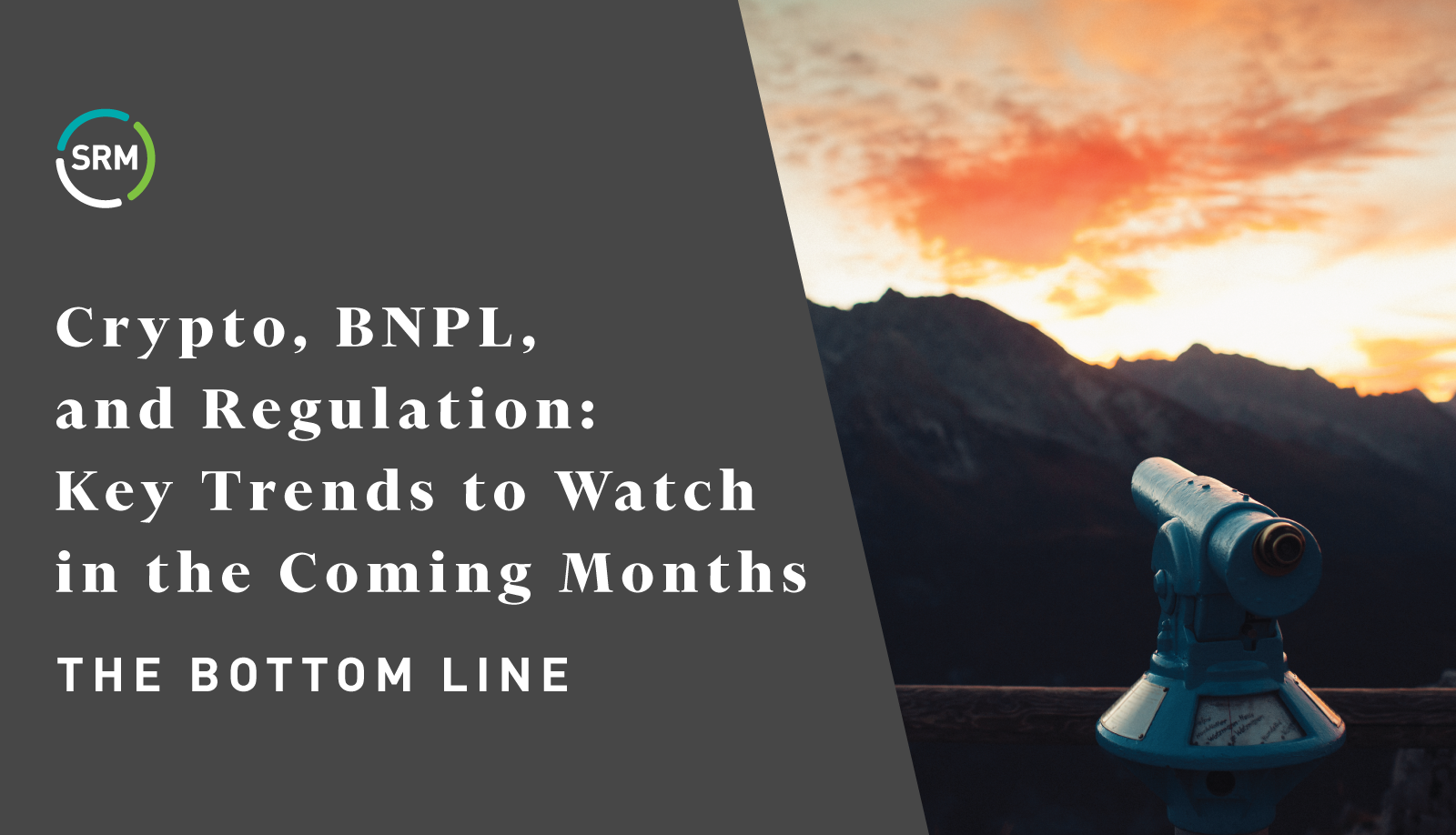
The first half of 2022 was eventful for banks and credit unions, and there’s no reason to expect the pace to slow. Financial institutions must monitor changes to the payments ecosystem while simultaneously dealing with rising interest rates, eroding consumer confidence, and potential cracks in credit quality.
Here’s a quick summary of what the team at SRM sees as the key trends in financial services and how these trends might play out over the balance of the year.
The Crypto Crash and the Long Game
Recent turbulence with digital assets, including cryptocurrency and stablecoins, has garnered plenty of headlines. After briefly reaching a high of $68,000 last November, the price of one Bitcoin fell below $20,000 at midyear before staging a nominal recovery. On a broader level, the crypto market lost two-thirds of its value, falling to less than $1 trillion.
A closer review reveals that many tech stocks have also taken hits – brands like Peloton and Netflix have suffered even more significant drops than the crypto market. While the inherent volatility of speculative assets of all varieties should be kept in perspective and adequately managed, interest in digital assets continues. Several financial institutions, especially credit unions, launched buy/sell/hold crypto capabilities in recent months in partnership with fintechs that provide supporting custodial services.
Recent price swings reinforce the need for client education – a role banks and credit unions are well suited to fill, given existing trust-based consumer relationships. Multiple surveys indicate a broad base of consumers would prefer to manage crypto activities through their financial institution. Debacles with uninsured entities such as TerraUSA, Celsius, and Voyager illustrate how sensible regulation could further stabilize and expand the market. Prepare for the long game.
Buying Now, Even More Paying Later
The once white-hot Buy Now, Pay Later (BNPL) space has encountered a similar trajectory as crypto. Some of the steepest drops in valuation have been among BNPL-focused fintechs in the US and abroad. At the same time, use cases for BNPL lending are expanding – but not always for the right reasons. With the cost of refueling a large car reaching the triple digits in many US regions, essential purchases increasingly look like logical BNPL candidates as consumers continue spending apace even as inflation nudges price tags higher.
The BNPL model has struck a chord with a meaningful consumer demographic, who sometimes perceive it as an alternative to credit card debt. We continue to see a role for financial institutions in BNPL – an idea we explore in our recent research report. Although regulation will increase, banks and credit unions are uniquely equipped to navigate this challenge. It’s critical to choose your partners wisely, monitor risk, reserve appropriately, and determine proper product positioning among your institution’s broader offerings.
Regulatory Seeds Ready for Harvest
Federal agencies have been unusually busy with requests for comments and information on various issues. Prime among these was the Biden Administration’s executive order requiring agencies to analyze the use and relevancy of digital assets, with calls for reports from various agencies by December. The Federal Reserve’s request for feedback on central bank digital currencies (CBDCs) drew an unprecedented volume of public comments.
Statements from Rohit Chopra, director of the Consumer Financial Protection Bureau (CFPB), have telegraphed his priorities. He has indicated support for making it easier for consumers to switch banking relationships, which could pose a risk for large and midsize institutions. In a June blog, he discussed a desire to revisit the CARD Act, with an eye on ensuring “reasonable and proportional” late fees and the Fair Credit Reporting Act. The agency is collecting data on overdraft and nonsufficient funds (NSF) fees to propose revisions to those policies.
More regulation seems inevitable. The stage has been set for significant regulatory activity, regardless of November’s mid-term elections. Should Democrats lose control of Congress, it could spur an even greater flurry of activity in a “lame duck” session. While there’s no need for panic, these issues warrant continued attention.
The Bottom Line
Digital assets, BNPL, and increased regulatory scrutiny must be prioritized by management teams heading into the second half of 2022. These issues are poised to dominate the landscape of financial services.
While patience seems warranted, banks and credit unions must remain vigilant when evaluating new products and services. Existing policies and procedures also merit more-frequent scrutiny. SRM stands ready to lend expertise and help you optimize a strategy best suited to your institution.


